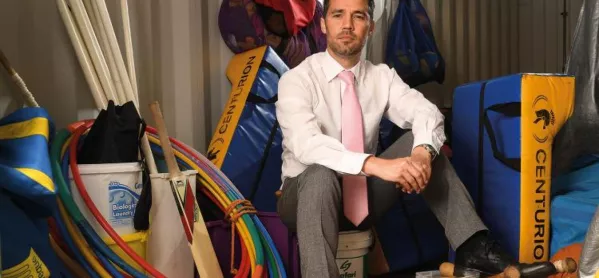- Home
- ‘Free schools have unleashed innovation. Fact’
‘Free schools have unleashed innovation. Fact’

It’s great to see the long-awaited announcement about the next wave of free schools come to pass. It’s been over a year since the last batch of approvals was published, and supporters could have been forgiven for thinking at times that the government had gone cold on the idea. Now that it has confirmed that it’s full steam ahead once more, it’s worth reminding ourselves why the policy matters so much.
Free schools were made possible by a simple change of the law in 2010, to allow new groups of people - teachers, schools, charities, parents - to open schools, not just local authorities. The idea was to enable others to meet the need for more and different types of school places, in the belief that they would be more responsive to local demands and introduce competition, innovation and choice into places currently lacking it.
Free schools tackle disadvantage
With more than 700 open or approved so far, I’d argue that the free schools policy was one of the coalition government’s biggest success stories, giving hundreds of thousands of pupils the opportunity to be educated in great schools right across the country. It is early days still, but emerging data suggest these schools are doing really well both in terms of their own outcomes and also the positive influence that they’re having on schools near them.
In England, like many countries, poverty is often linked to poor educational achievement. Free schools are three times more likely to be in the most deprived areas of England than the least deprived ones, and they’re starting to break the link between background and results. Schools such as Tauheedul Islam Boys’ High School, Reach Academy Feltham and Dixons Trinity Academy are having great success with disadvantaged students, and are amongst the very best performing state schools in the country for GCSE, full stop.
It’s not just these outlier schools though. In last summer’s GCSEs, free schools were the top performing type of school in terms of the government’s official performance measure, Progress 8. At A level, a number of specialist sixth-form free schools are taking on the private schools at their own game and getting loads of students into Oxbridge and other top universities.
So free schools are proving academically successful, including in places where this wasn’t often the case. The programme has also been absolutely crucial in addressing the “baby bulge” that is working its way through schools, creating 400,000 places quicker than ever before. There’s no doubt that the old pupil place planning process was struggling, and free schools have played their part in helping the system to catch up. They’ve also done this 29 per cent cheaper than those built under the Building Schools for the Future programme.
Introducing innovation
However, the most important thing about the policy isn’t its ability to create places more cheaply or in areas of need. At its core, it was about making it easier for new players to enter the school system and unleash innovation. It was about giving parents, teachers and others the opportunity to put into action the ideas they believed in, to address the challenges their communities faced. The variety of schools created so far is quite something to behold, and their influence on things more generally is really starting to be felt - such as Michaela Community School’s no-nonsense approach to behaviour, School 21’s focus on oracy, and Dixons Music Primary’s championing of a musical curriculum. The programme gave parents greater choice, and these schools the opportunity to thrive.
Mistakes have definitely been made along the way - I certainly made plenty at Bedford Free School, which I set up. However, the system has shown itself to be extremely quick at learning from, and responding to, these. The question now is how we get new schools into places that haven’t benefitted from them yet, and maintain the appetite for innovation seen so far. Doing this at the same time as the budget for free schools is getting smaller - after last summer’s raid on this money, to reallocate it to the general schools’ budget - is going to be a challenge.
Given that the next phase is going to be trickier, it is great news that the New Schools Network has been asked by the Department for Education to continue advising potential free school groups. I’ve benefitted first-hand from its help with both of the free schools I successfully bid for, and no other organisation has the breadth and depth of expertise in drumming up and supporting interest. Now that I’m in place as interim director, it’s great to have an opportunity to see how the process works from the other side, and play a different role in the free school process.
The free schools programme will always have its critics, but its future now is as bright as ever. Hopefully, in the coming years, more areas will benefit from the policy, and more pupils than ever before will be able to get a good school place because of it.
Mark Lehain is the founder and former headteacher of Bedford Free School. He is now director of Parents and Teachers for Excellence and interim director of the New Schools Network
Keep reading for just £1 per month
You've reached your limit of free articles this month. Subscribe for £1 per month for three months and get:
- Unlimited access to all Tes magazine content
- Exclusive subscriber-only stories
- Award-winning email newsletters


